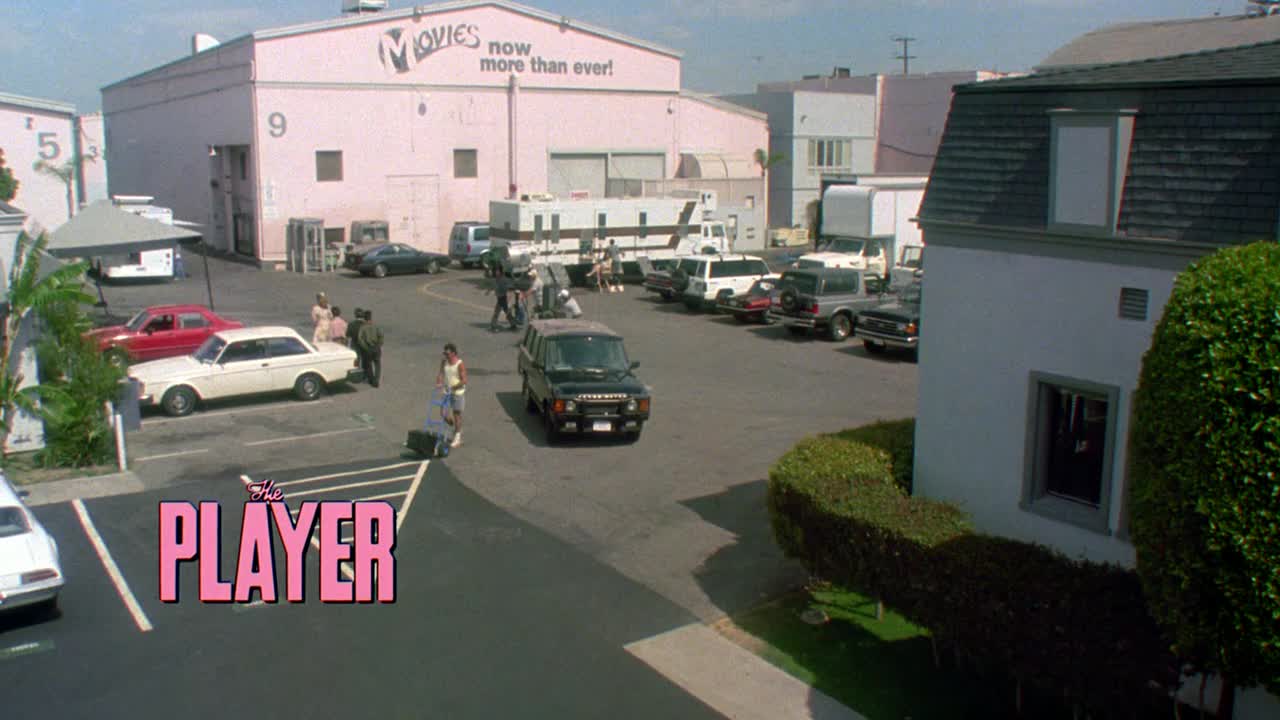 [This is the 400th post and it is dedicated to Robert Altman’s genius mind.]
[This is the 400th post and it is dedicated to Robert Altman’s genius mind.]
The fifth post of Films in Films (posted 16 months ago!) contained an image from Robert Altman’s The Player, in which Tim Robbins watches The Bicycle Thief at the Rialto Theatre. This was the only actual film featured in The Player, although there were two more shown in the studio’s screening room but those two were made exclusively for the needs of the film.
However, Altman’s film includes a huge amount of film references in various forms, subtly put into several key moments of the plot, thus creating a perplexing, yet enjoyable, narrative style. A prime example of this method is the use of classic film posters (totally neglected in the first Player’s post here) which are used not only as an obvious decorative solution for the studio executive’s offices but also as a plot guide. Altman ends some scenes with close-ups to posters, usually after a suspenseful event, thus communicating a message to the audience through the poster titles, as you can see below.
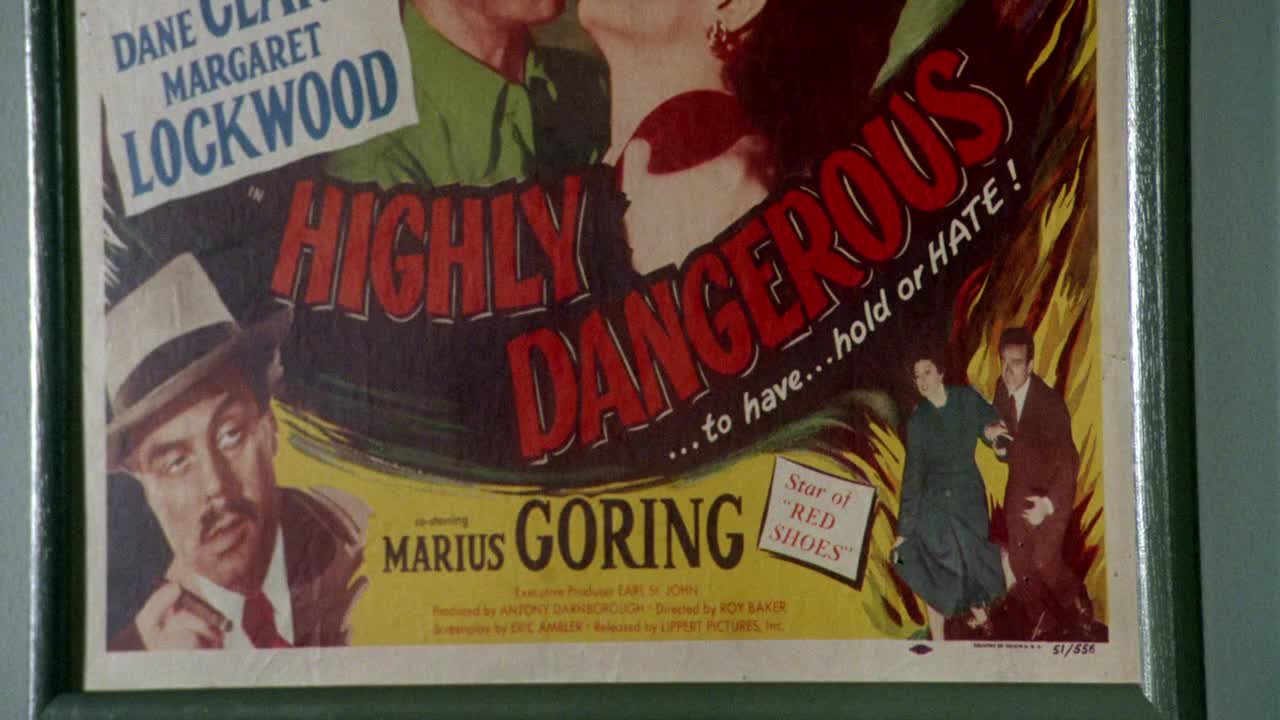 Griffin Mill (Tim Robbins) wonders for the first time who this highly dangerous man is who sends those postcards. Poster of Roy Ward Baker’s Highly Dangerous (1950).
Griffin Mill (Tim Robbins) wonders for the first time who this highly dangerous man is who sends those postcards. Poster of Roy Ward Baker’s Highly Dangerous (1950).
 He’s looking for clues about the writer’s identity in the hope of finding him and when he does, God only knows what he’ll do! Poster of Busby Berkeley’s They Made Me a Criminal (1939).
He’s looking for clues about the writer’s identity in the hope of finding him and when he does, God only knows what he’ll do! Poster of Busby Berkeley’s They Made Me a Criminal (1939).
 When Griffin finally meets David Kahane (Vincent D’ Onofrio) the scene ends with a close-up to a poster of D.J. Webster’s The Dark Side of the Moon (1990). The title has nothing in common with the plot, but Altman masterfully ignores the name of the title, focusing the lens on the tagline: Something is waiting.
When Griffin finally meets David Kahane (Vincent D’ Onofrio) the scene ends with a close-up to a poster of D.J. Webster’s The Dark Side of the Moon (1990). The title has nothing in common with the plot, but Altman masterfully ignores the name of the title, focusing the lens on the tagline: Something is waiting.
 This is one of many posters inside Griffin Mill’s office. The close-up comes after a police interrogation scene which results in their suspecting Mill of being guilty. B. Reeves Eason’s Murder in the Big House (1942).
This is one of many posters inside Griffin Mill’s office. The close-up comes after a police interrogation scene which results in their suspecting Mill of being guilty. B. Reeves Eason’s Murder in the Big House (1942).
Additionally, most of the posters in Mill’s office could be connected to the plot.
 During the interrogation, Griffin must be thinking about prison. Poster of Arthur Lubin’s Prison Break (1938) on the left.
During the interrogation, Griffin must be thinking about prison. Poster of Arthur Lubin’s Prison Break (1938) on the left.
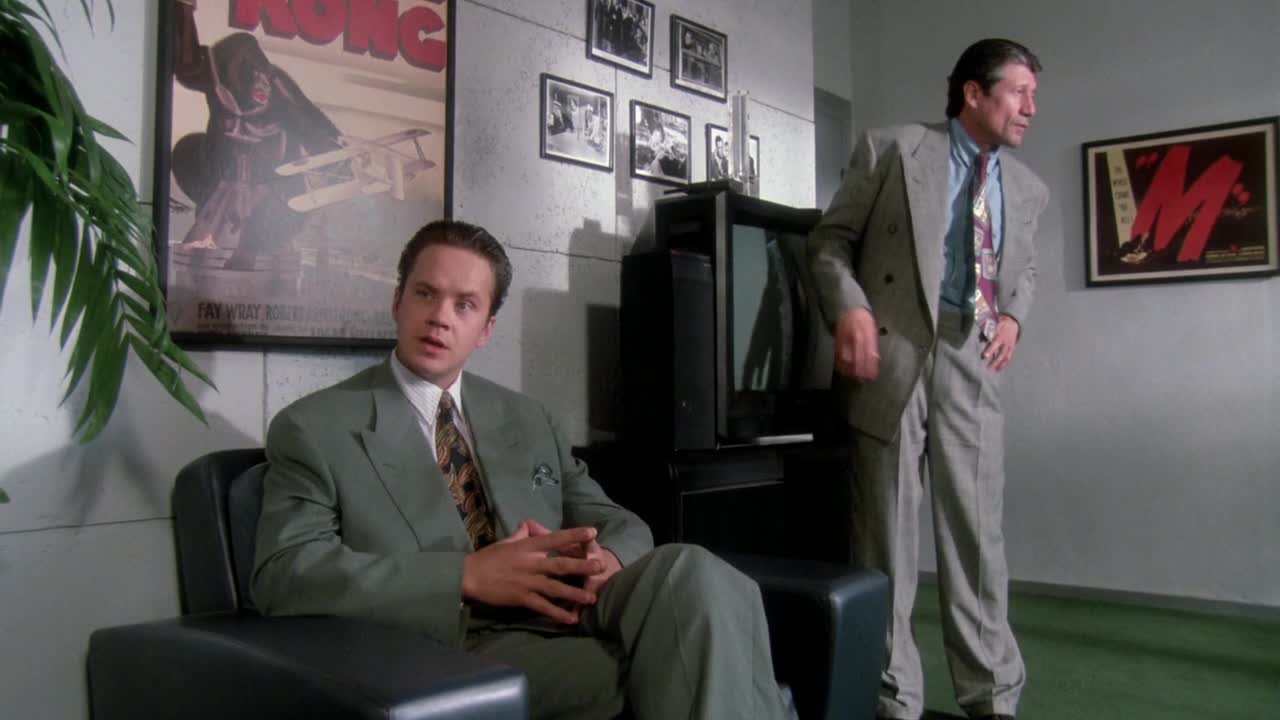 Also, he probably thinks that he is being treated like a monster. Posters of Merian C. Cooper & Ernest B. Schoedsack’s King Kong (1933) and Joseph Losey‘s M (1951).
Also, he probably thinks that he is being treated like a monster. Posters of Merian C. Cooper & Ernest B. Schoedsack’s King Kong (1933) and Joseph Losey‘s M (1951).
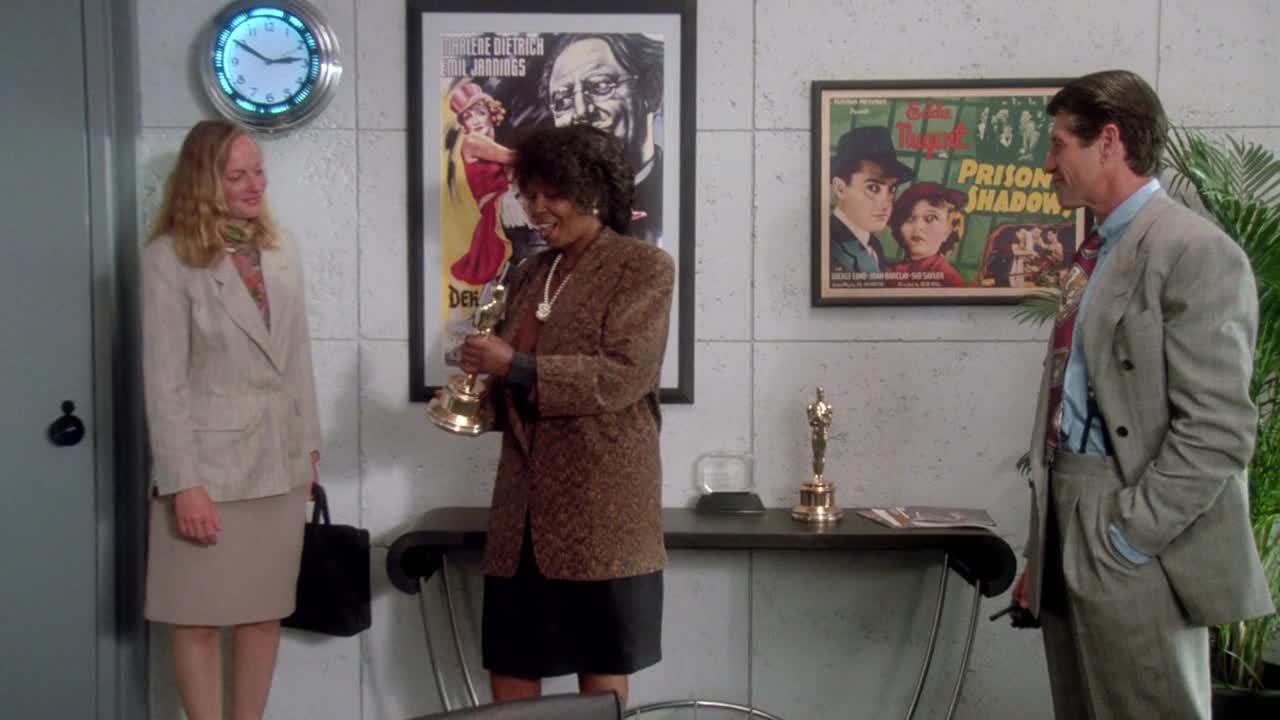 Again, prison is referenced. Poster of Robert F. Hill’s Prison Shadows (1936) next to Josef von Sternberg’s Der Blaue Engel (1930) which is probably unrelated.
Again, prison is referenced. Poster of Robert F. Hill’s Prison Shadows (1936) next to Josef von Sternberg’s Der Blaue Engel (1930) which is probably unrelated.
 And of course, the poster of William Castle’s Hollywood Story (1951) reflects Griffin’s way of seeing everything as a potential Hollywood story.
And of course, the poster of William Castle’s Hollywood Story (1951) reflects Griffin’s way of seeing everything as a potential Hollywood story.
More posters below – related or not to the plot:
 Office corridors. On the right, Marcel Carné’s Hôtel du Nord (1938). On the left, Jean Cocteau’s La belle et la bête (1946). Cocteau’s film poster is clearly visible a minute later, when Griffin’s lover Bonnie (Cynthia Stevenson) is next to it – a possible reference to their relationship.
Office corridors. On the right, Marcel Carné’s Hôtel du Nord (1938). On the left, Jean Cocteau’s La belle et la bête (1946). Cocteau’s film poster is clearly visible a minute later, when Griffin’s lover Bonnie (Cynthia Stevenson) is next to it – a possible reference to their relationship.
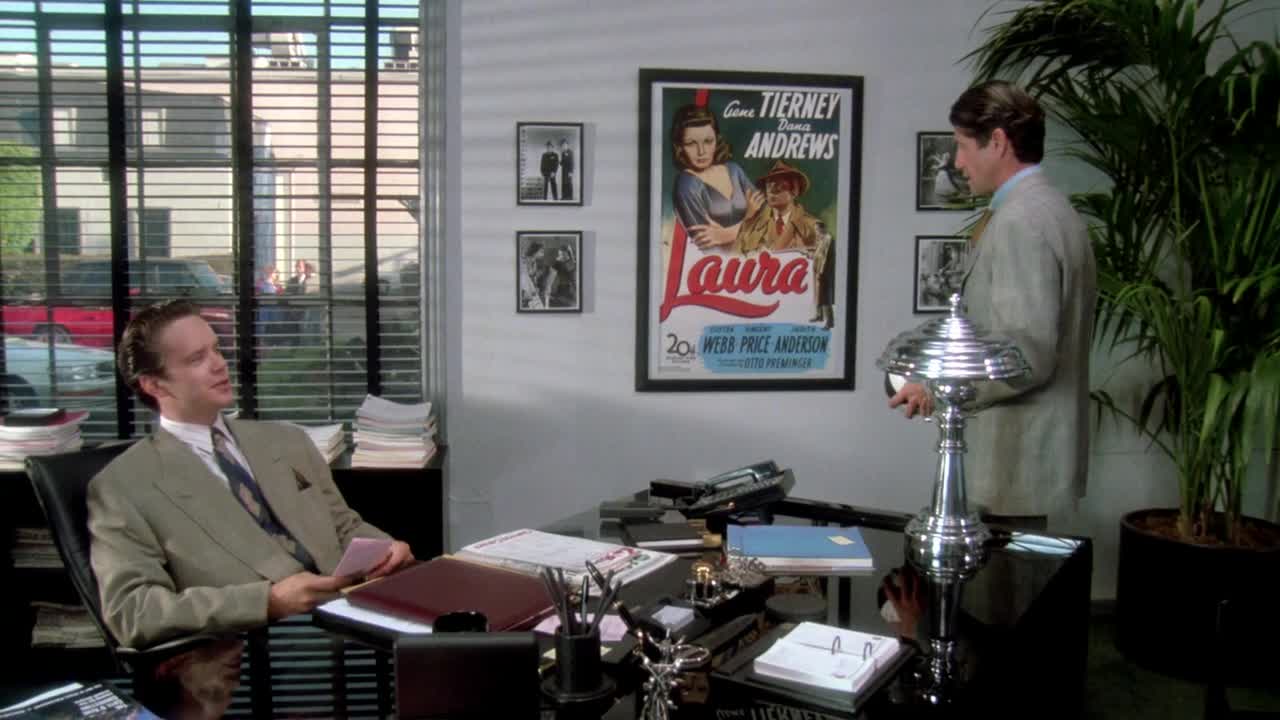 There are also lots of classic posters hanging on the walls, with no direct reference to the narrative. In Griffin’s office again, there’s a great poster of Otto Preminger’s Laura (1944).
There are also lots of classic posters hanging on the walls, with no direct reference to the narrative. In Griffin’s office again, there’s a great poster of Otto Preminger’s Laura (1944).
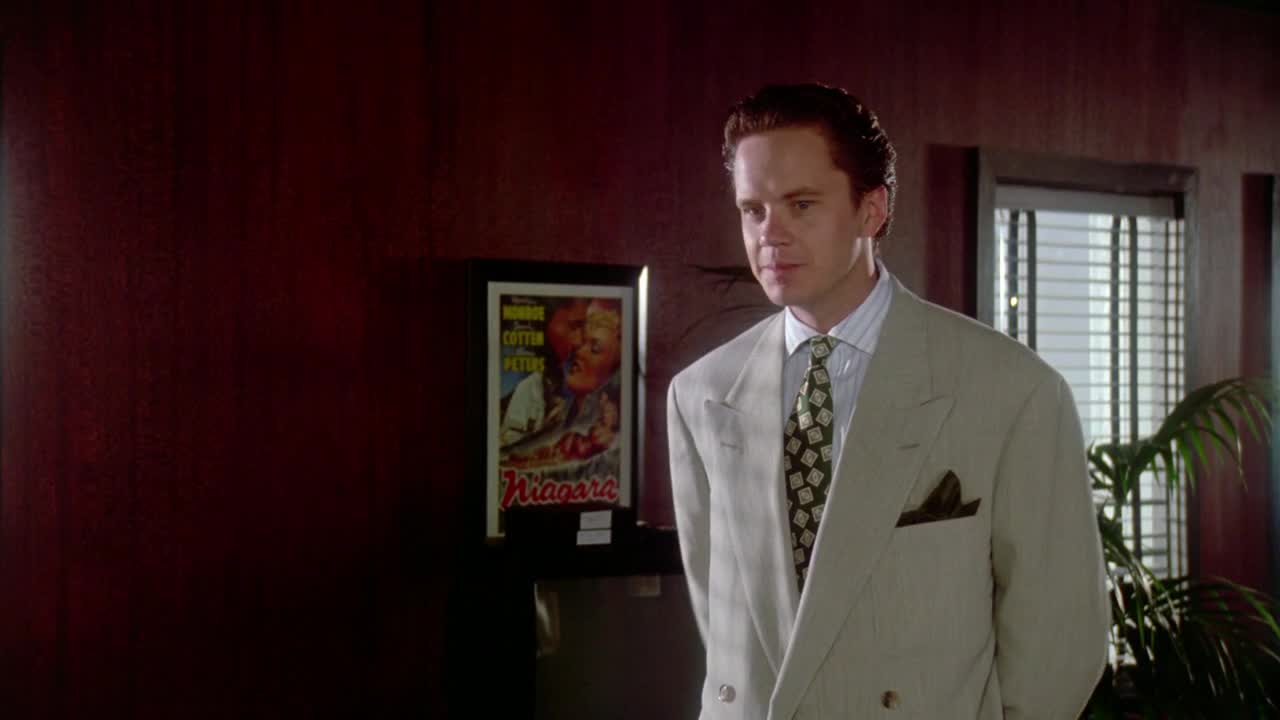
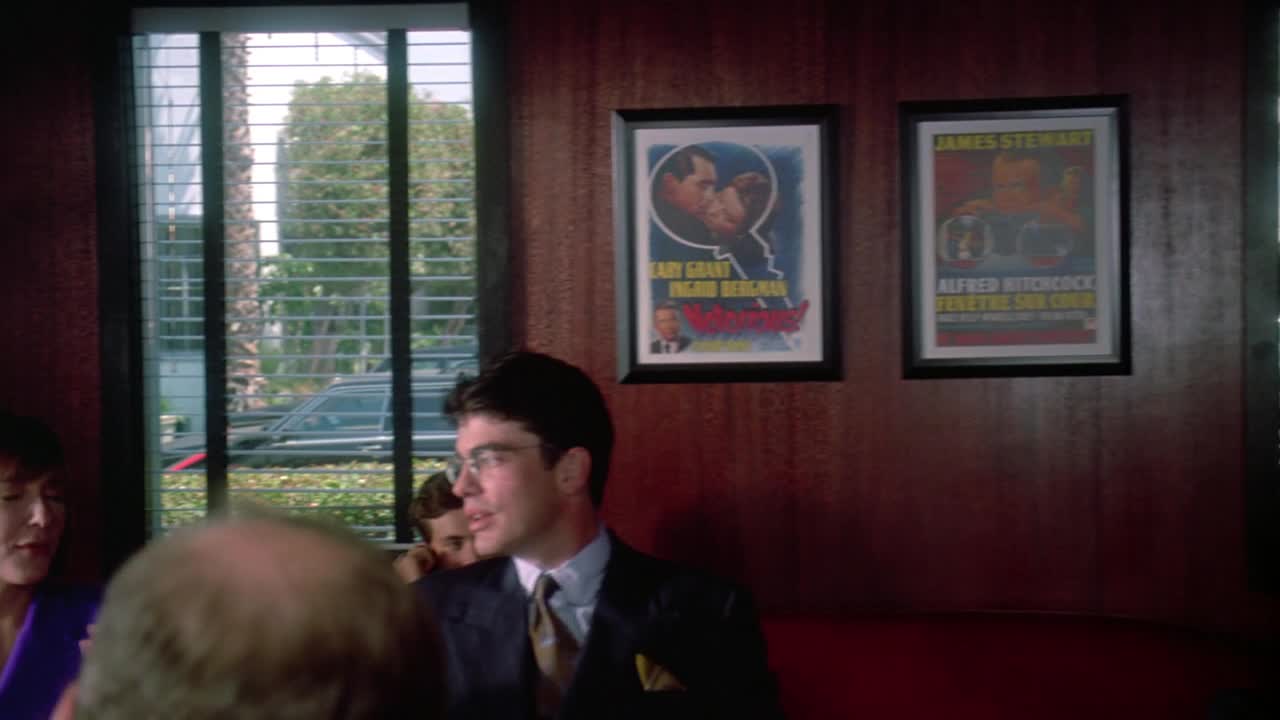
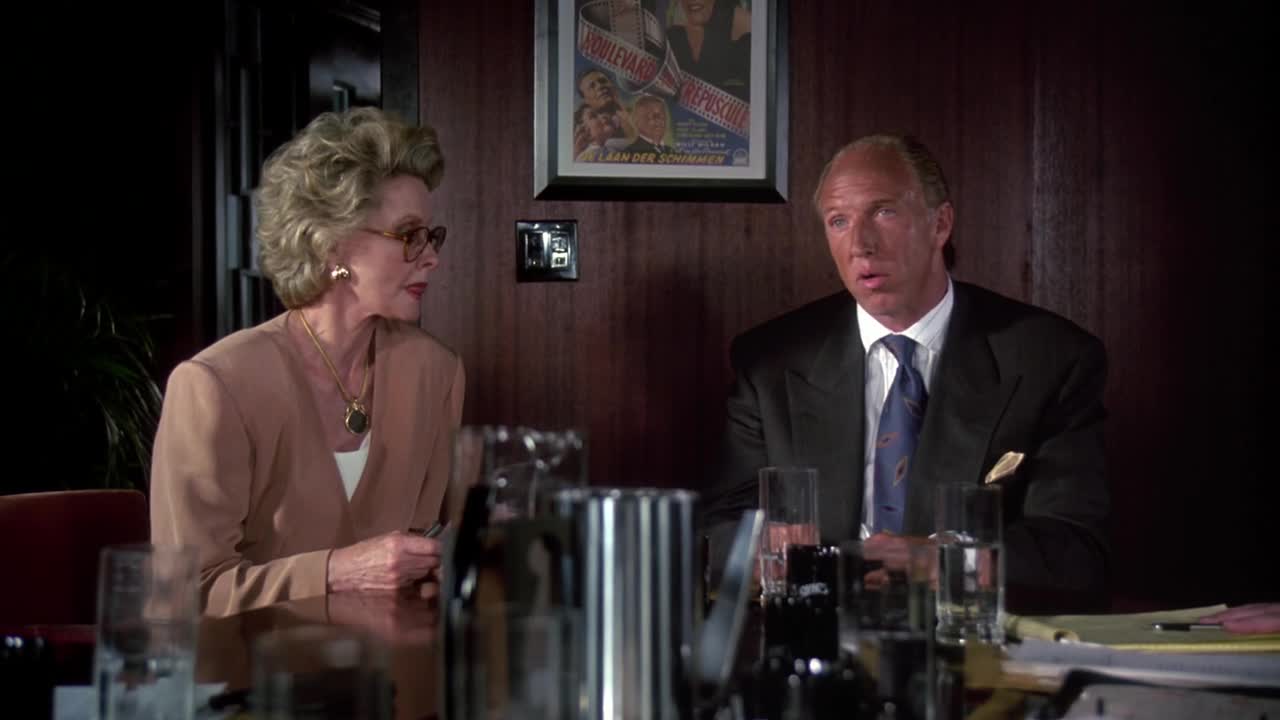

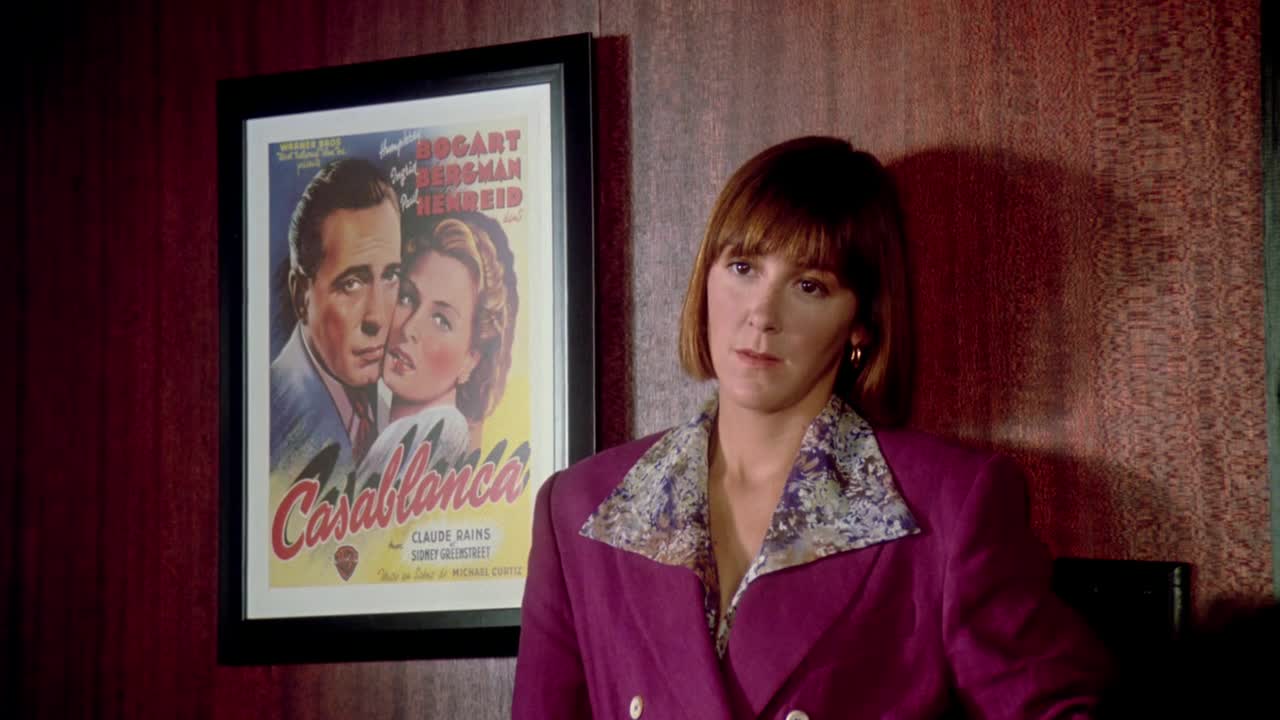 Six more posters in Joel Levison’s (Brion James) office, where the important decisions are made. Henry Hathaway’s Niagara (1953), Alfred Hitchcock’s Notorious (1946) and Rear Window (1954), Billy Wilder’s Sunset Blvd. (1950), Stanley Kubrick’s Lolita (1962) and Michael Curtiz’s Casablanca (1942).
Six more posters in Joel Levison’s (Brion James) office, where the important decisions are made. Henry Hathaway’s Niagara (1953), Alfred Hitchcock’s Notorious (1946) and Rear Window (1954), Billy Wilder’s Sunset Blvd. (1950), Stanley Kubrick’s Lolita (1962) and Michael Curtiz’s Casablanca (1942).
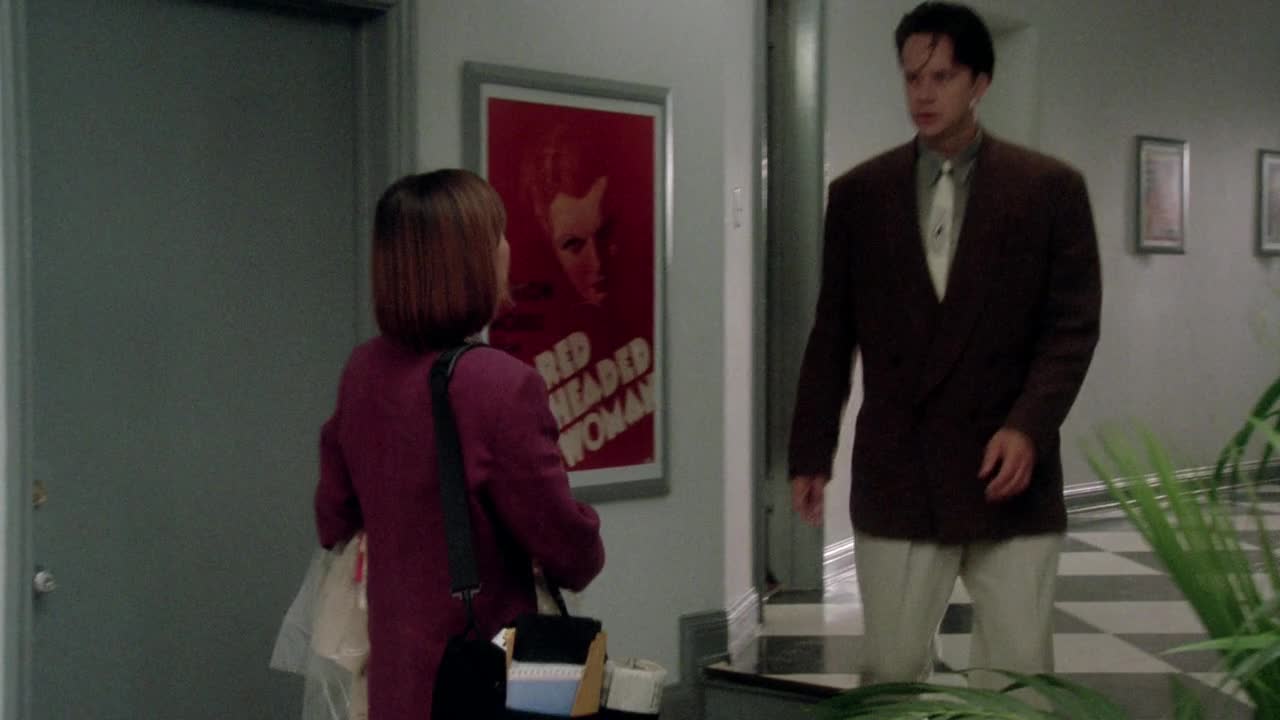 Another poster in the studio’s corridors, Jack Conway’s Red Headed Woman (1932).
Another poster in the studio’s corridors, Jack Conway’s Red Headed Woman (1932).
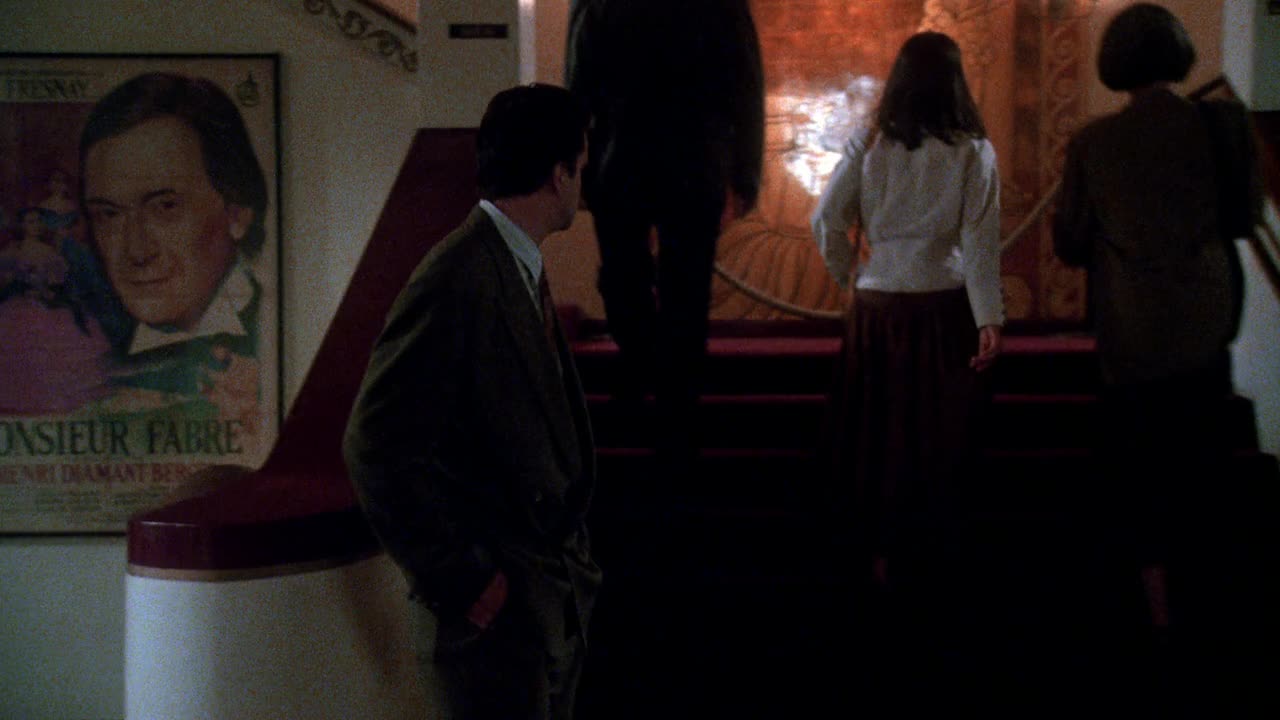 At the Rialto Theatre, where Griffin watches The Bicycle Thief, posters of 2 french films are visible. Henri Diamant-Berger’s Monsieur Fabre (1951)…
At the Rialto Theatre, where Griffin watches The Bicycle Thief, posters of 2 french films are visible. Henri Diamant-Berger’s Monsieur Fabre (1951)…
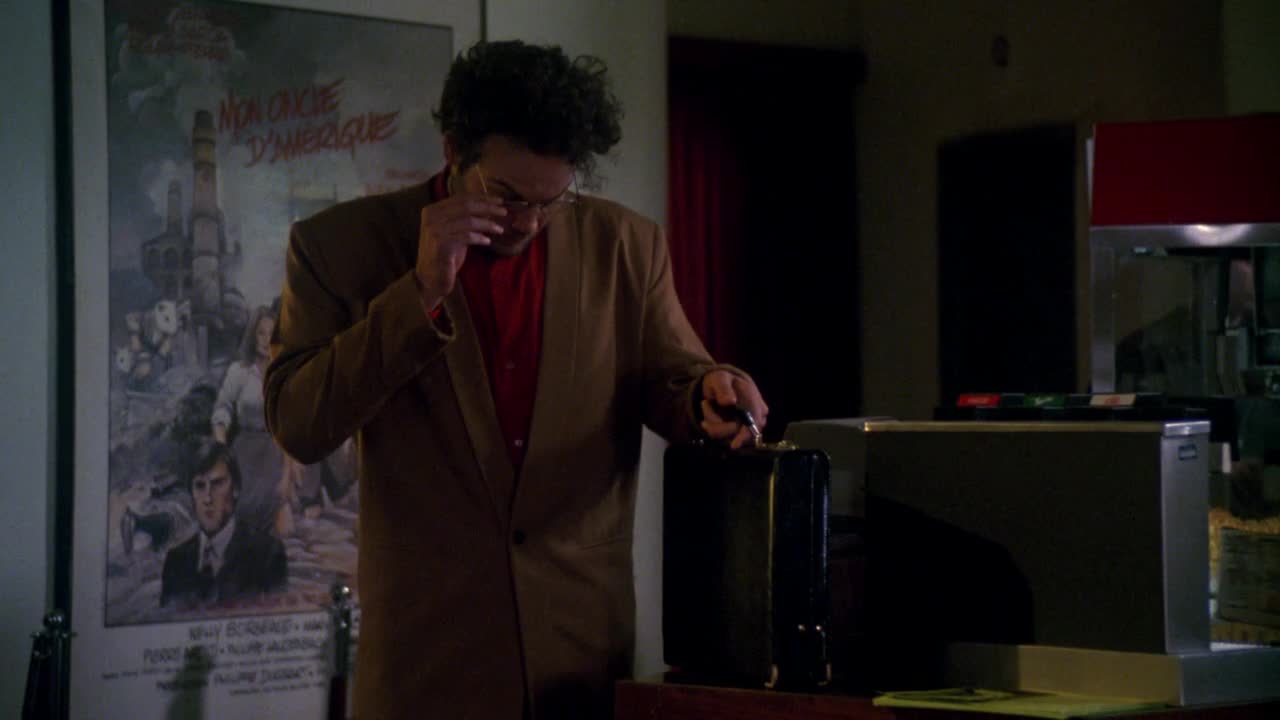 … and Alain Resnais’ Mon oncle d’Amérique (1980).
… and Alain Resnais’ Mon oncle d’Amérique (1980).
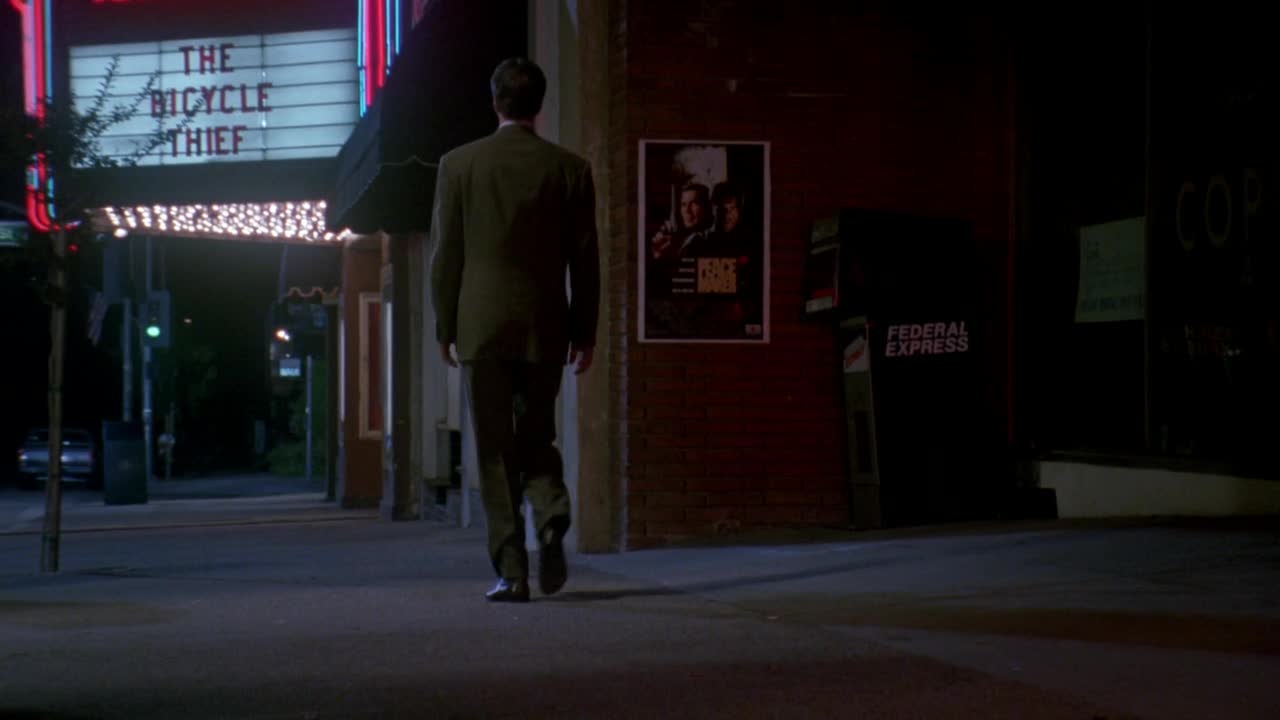 In contrast, outside the building there is a poster of an American film, Kevin Tenney’s Peacemaker (1990).
In contrast, outside the building there is a poster of an American film, Kevin Tenney’s Peacemaker (1990).
Scenes from Robert Altman’s The Player (1992).
More: The Player (I)
